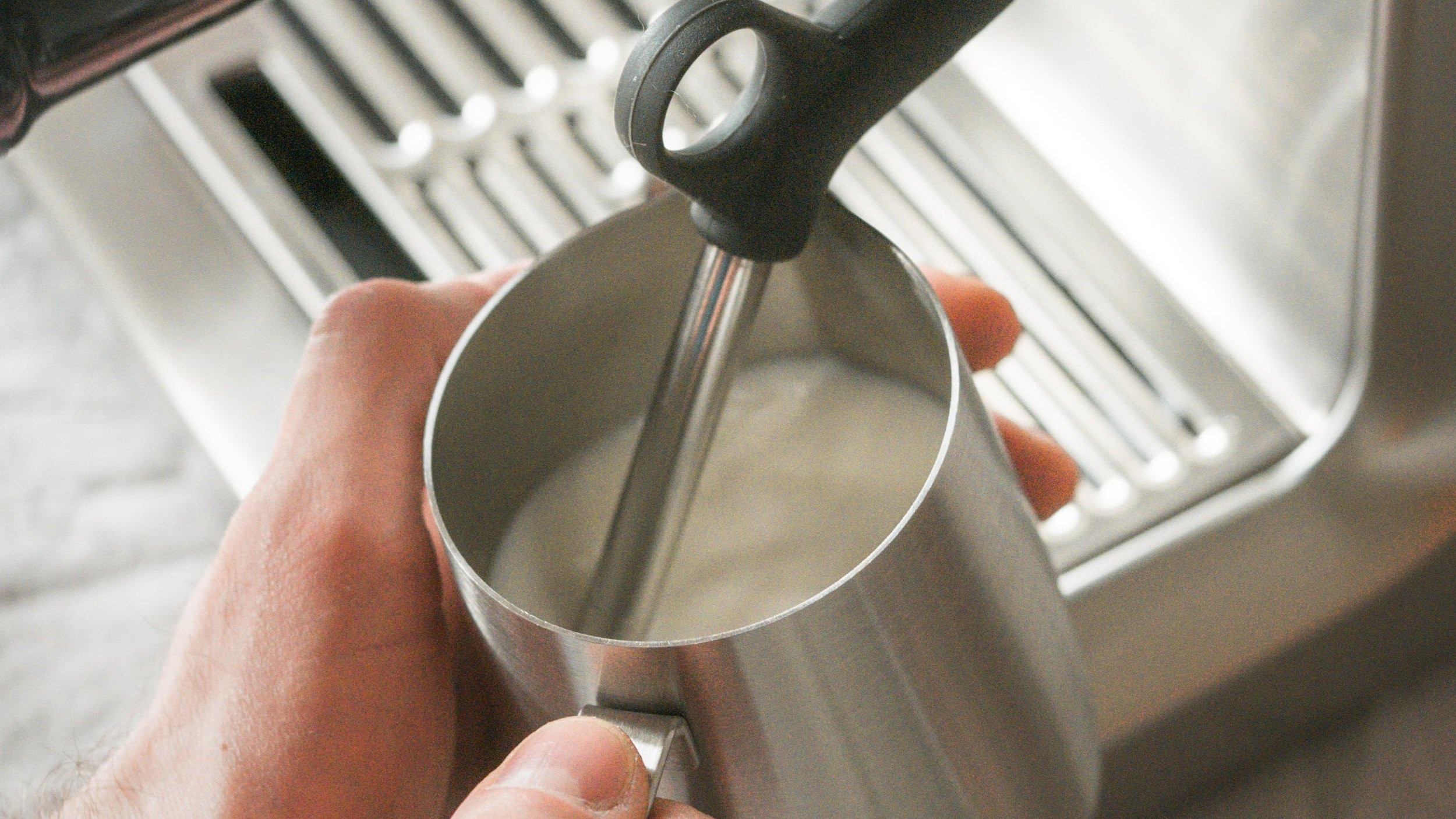Steaming milk at home may seem daunting, but with the right approach, it can become an enjoyable and rewarding part of your coffee-making ritual. Whether you're creating a silky latte, frothy cappuccino, or a rich macchiato, mastering the art of milk steaming is essential for achieving professional-level drinks. The Breville Barista Express, a top-tier espresso machine, provides the tools you need to craft café-quality steamed milk at home. In this guide, I'll walk you through the process based on personal experience with this machine. Discover the advanced features and performance of this machine in our Breville Dual Boiler BES920XL review
The Importance of Steamed Milk
Before diving into the process, it’s crucial to understand why steamed milk is important. Steaming serves two main purposes: creating foam (or microfoam) and heating the milk. Properly steamed milk contains tiny, uniform bubbles, creating a smooth, velvety texture that enhances the taste and appearance of your coffee. This creamy consistency perfectly complements the boldness of espresso, creating a balanced, rich coffee experience. Learn about the ease of use and innovation in our Breville Barista Touch Impress review
Getting to Know Your Breville Barista Express
The Breville Barista Express, known as the Sage Barista Express in the UK, is a popular home espresso machine that offers professional-grade features. Its steam wand is designed to help you create beautifully textured milk with ease. With a little practice, you can craft barista-quality drinks from your kitchen. Compare these two popular models in our Breville Barista Express Impress vs Pro review
One standout feature of the Breville is its user-friendly steam wand, which provides the power needed for excellent milk texture while offering precise control over your desired consistency. Find out which machine suits you better in our Breville Barista Pro vs Express review
What You’ll Need
To steam milk on the Breville Barista Express, gather the following essentials:
- Breville Barista Express with steam wand
- Cold milk (whole milk for best results, though plant-based options like oat or almond milk also work)
- Stainless steel milk jug (retains temperature during steaming)
- Thermometer (optional, for monitoring milk temperature)

Step 1: Preparing the Breville for Steaming
Ensure your machine is fully warmed up. The Breville will indicate it's ready when the steam button lights up. I recommend waiting for a minute or two after powering it on to ensure it's at the optimal temperature. Explore the key differences between these premium machines in our Breville Oracle vs Oracle Touch review
Before you start steaming, purge the steam wand by turning the steam knob for a second to release any built-up water. This ensures you get clean steam when you begin.
Step 2: Preparing Your Milk
Fill your milk jug about one-third full with cold milk, directly from the fridge. Cold milk gives you more time to achieve the perfect texture before it overheats. Whole milk is ideal for creating creamy foam, but plant-based milks, especially those labeled "barista," can also work well.
Step 3: Positioning the Steam Wand
Positioning the steam wand correctly in the milk jug is crucial. Insert the wand just below the milk’s surface at a 15- to 20-degree angle. Keep the tip near the surface to introduce air and create foam.
For best results, aim for a vortex-like motion in the milk, which will smooth out larger bubbles and help create the silky microfoam. Tilting the jug slightly and positioning the wand near the jug’s edge often works well.
Step 4: Steaming the Milk
Now, it’s time to steam. Turn the steam knob to start. Initially, you’ll hear a hissing sound, which is a good sign. During the first 5-10 seconds, the goal is to introduce air by keeping the wand’s tip near the surface. Avoid splashing, but ensure enough air is being drawn in.
After 5-10 seconds, lower the jug slightly, so the wand is deeper in the milk. Now, focus on heating and texturing the milk. Aim for a smooth, swirling motion to break down bubbles and achieve a silky texture. Steaming usually takes around 20-30 seconds.
If you have a thermometer, target 150°F (65°C). If not, use the touch test: the milk jug is ready when it becomes too hot to hold for more than a couple of seconds.
Step 5: Finishing Up
Once your milk is properly steamed, turn off the steam and immediately wipe the wand with a damp cloth to remove any milk residue. Briefly turn on the steam again to purge any remaining milk inside the wand.
Gently tap the milk jug on the counter to eliminate any large bubbles, and swirl the milk to integrate the foam. A glossy, velvety finish indicates that your microfoam is ready for pouring.
Step 6: Pouring the Steamed Milk
When pouring, start with the jug close to the cup, pouring slowly. As the cup fills, raise the jug slightly and pour faster to help the foam settle on top. If you’re feeling adventurous, this is a great opportunity to try simple latte art.

Troubleshooting Common Milk Steaming Issues
- Milk not frothing: This could be due to the type of milk or incorrect steam wand positioning. Ensure you’re using whole milk and keeping the wand just below the surface at the start.
- Large bubbles: Large bubbles may result from introducing too much air. Keep the wand’s tip near the surface, but in a controlled manner.
- Overheated milk: Milk can scorch if overheated, affecting taste. Use a thermometer or rely on touch to keep the milk in the ideal temperature range.
Conclusion
Steaming milk on the Breville Barista Express takes practice, but with time, you’ll achieve café-quality results. Focus on controlling both air and heat to create smooth, glossy microfoam, and soon, you’ll be able to elevate your coffee experience with perfectly steamed milk. Whether you’re making a latte, cappuccino, or experimenting with latte art, mastering this skill will take your coffee creations to the next level.
